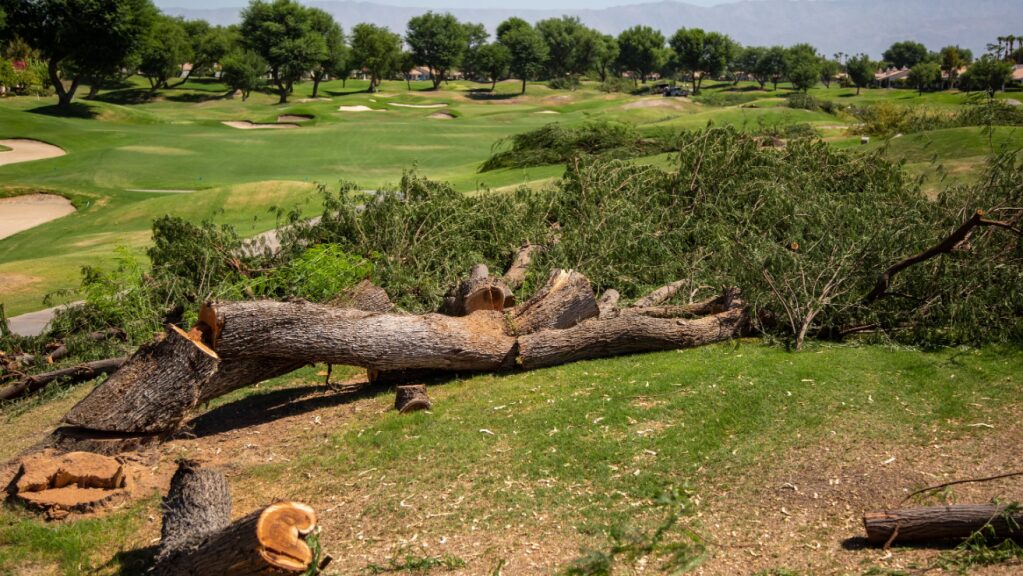Handed the responsibility of a restoration project for the Stadium Course at PGA West in La Quinta, architect Pete Dye’s masterpiece of golf mayhem, Tim Liddy is relying on the close professional and personal 28-year relationship he had with Dye to keep the project on track.
“He was like a second father to me,” Liddy said. “So when I’m out there, I can hear him talking to me. I can hear him yelling at me just walking around.”
Liddy is hearing a lot of Dye’s comments these days as PGA West embarks on a two-year renovation of the Stadium Course, the host course of the PGA Tour’s The American Express tournament each January.
Year one of the restoration features landscaping, the removal of trees from the layout and working to restore ground cover and bushes that were part of the course’s look in the mid-1980s. In the summer of 2023, the work will focus on an aging irrigation system as well as taking bunkers and greens back to their original sizes and shapes.
While Liddy has been the head of his own design firm, Liddy and Associates, since 1993, he worked closely with Dye on many projects. Dye, who died in 2020, became famous in the 1980s for his designs like the Stadium Course at PGA West and the TPC Stadium Course at Sawgrass, home of The Players Championship in Ponte Vedra Beach, Florida.
Dye’s designs were radical for the time, with deep bunkering, mounding throughout the course, forced carries over huge lakes, undulating greens and plenty of his trademark railroad ties.
The PGA West course became famous for hosting six Skins Games on national television starting in 1986, and for the negative reactions of pros when the course was played in the 1987 American Express, then called the Bob Hope Chrysler Classic. The tournament left the Stadium Course after just one year and didn’t return to the rotation of the event until 2016.
Liddy says he only wants to restore the course, not overhaul it.
“We’re not going to change the golf course, obviously,” Liddy said. “That would be sacrilegious. So the golf course being 37 years old, what do we need to do? Well, it’s infrastructure. The greens have shrunk, which is common. The bunkers have lost their shape as they do with age and maintenance and guys hitting sand out of them. So the bunkers need to be put back the way they were. Irrigation is 30 years old, or 37 years old. They are designed to last 20.”
The work this summer is being done in stages, with the back nine of the…
..
Click Here to Read the Full Original Article at Golfweek…
